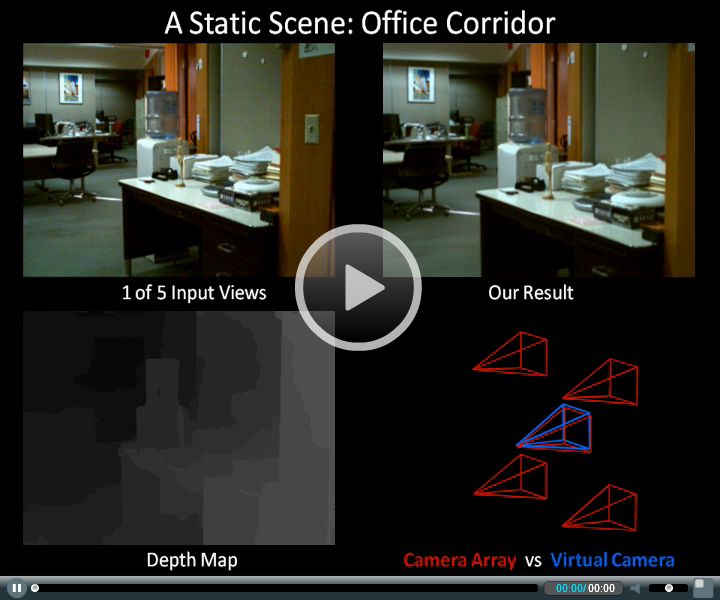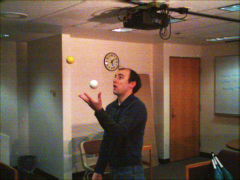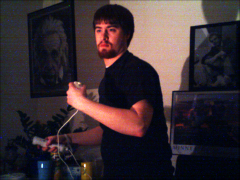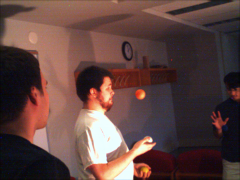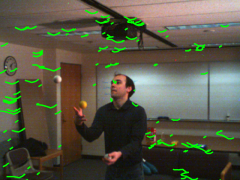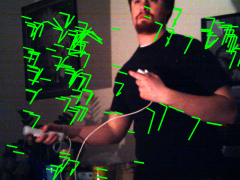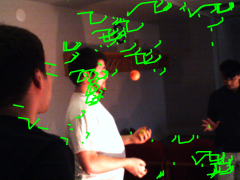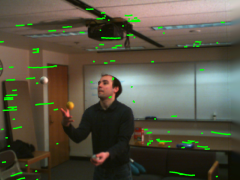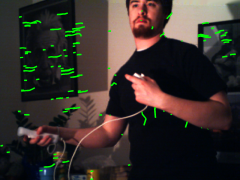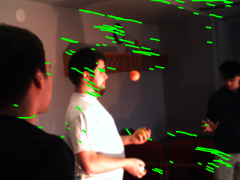|
The following four datasets contain five-view PNG image sequences. The frame rate is
25 fps, and the image size is 480 x 360. The images have been corrected to remove
radial distortion. Intrinsic and extrinsic camera parameters for each of the five cameras are
available here.
Clarification (added March 13, 2011): due to
image quality issues in one of the corner cameras, the images provided (and those used to
generate our demos) were captured using the following five cameras: topmost center, leftmost
center, center, rightmost center, and bottommost center -- not the corner
cameras, as indicated in Figure 1 of the paper.
Water cooler dataset, 350 frames [ZIP 421.3 MB]
Solo juggler dataset, 530 frames [ZIP 689.3 MB]
Video game dataset, 550 frames [ZIP 714.8 MB]
Crowd dataset, 260 frames [ZIP 294.4 MB]
|
 3D stereoscopic video stabilization, Demo at ICCV 2011.
3D stereoscopic video stabilization, Demo at ICCV 2011.
